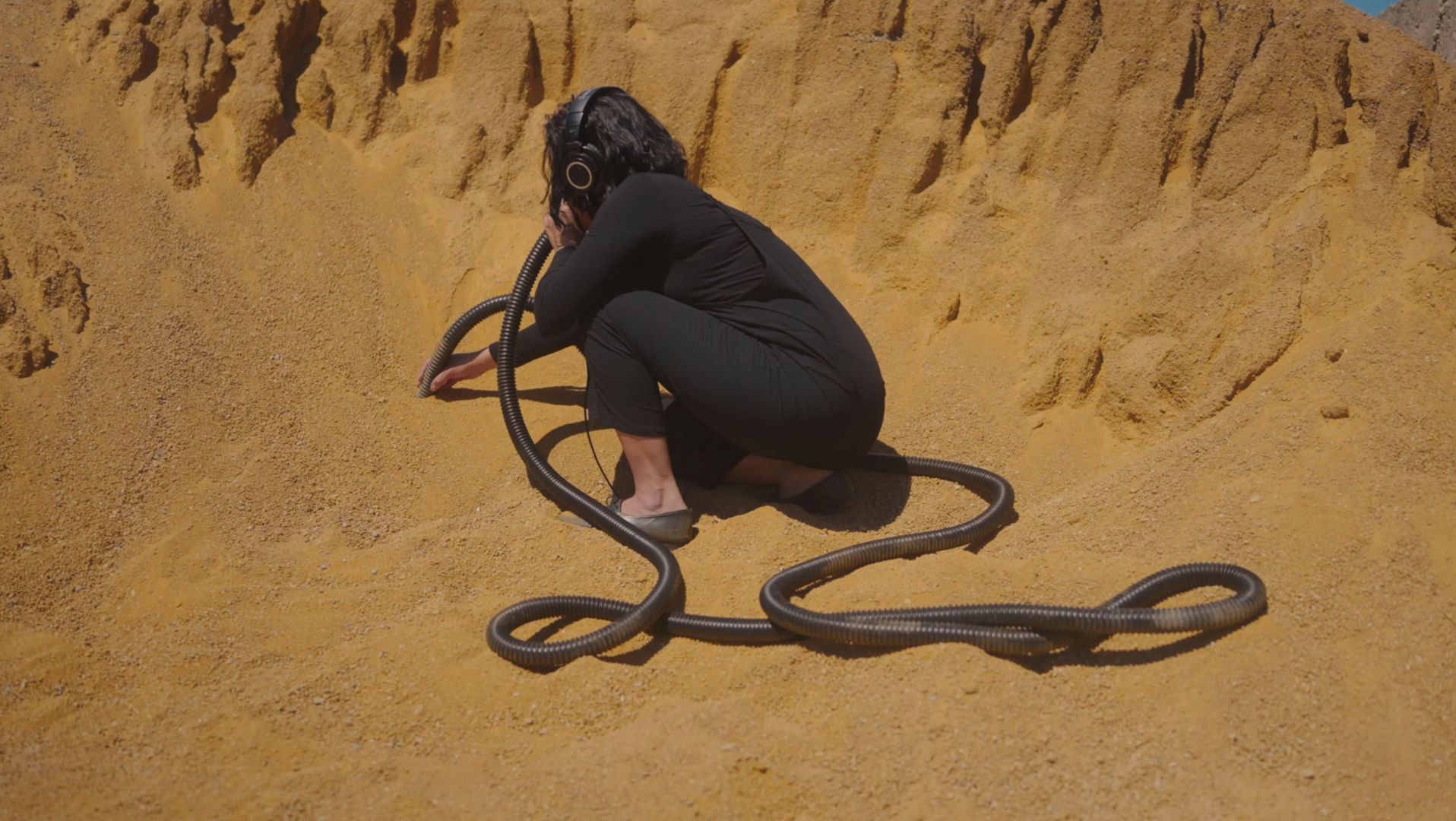Meet Sholeh Asgary | Interdisciplinary Sound Artist

We had the good fortune of connecting with Sholeh Asgary and we’ve shared our conversation below.
Hi Sholeh, we’d love to hear about how you approach risk and risk-taking
Risk is a precondition for creation. To determine that one is risking something, one must accept that there is a possibility of loss. The “happy accident” is a moment you gain and lose everything at once. For example, sometimes, the best part of the work will become irrelevant to the whole. Often, I begin projects with a tip of intuition or curiosity, eventually leading to a massive amount of research, which is the easy part. Once this research has been exhausted, or it feels that I am about to slide away from my creative practice, intuition, or the alchemical, the tough part begins: watching things come together or fall apart through an embodied practice, which involves “risk.” Even dividing these possibilities into a binary here is a mistake because transformation is constant and never rests on a singular pole.


Can you open up a bit about your work and career? We’re big fans and we’d love for our community to learn more about your work.
I make interdisciplinary sound work that considers complexities ranging between visibility and opacity, history and myth, and worldmaking and death. The mediums I explore these with could include water, water clocks, crude oil, movement, light, imaging, moving images, voice, and sound. For the last several years, these processes have resulted in forms that figure heavily towards sound installations, sculptures, and performances. In my sound performances, I explore materials and concepts used in my larger practice, which most recently included pirate AM radio transmission, frequency interference, fluorescent lights, and the Farsi alphabet.
I’m particularly excited about my most recent solo exhibition, “ALBEDO,” at an artist-run space in San Francisco called Incline Gallery. “ALBEDO” transformed a space historically a mortuary through a light and sound installation of 79 fluorescent lights, pirate radio transmitting the Farsi alphabet, radio waves that amplified the sound of electricity, and agricultural water containers. “ALBEDO” implicated visitors and architecture alike. I considered the work to be a collaboration with the history of the building and site, the ionosphere, and voices traveling by way of AM radio to explore ubiquitous systems intended to be otherwise invisible. My favorite evening was a performance in which several other musicians I deeply admire, and I played a collaborative set through the installation, requiring viewers/listeners to travel the space physically.
I’m looking forward to this Fall when I will dedicate time to collective processes, collaboration, and co-creation during an upcoming residency at Berkeley Art Center. Look out for forthcoming public programming! In addition, I’m continuing to develop a project that grew out of “Ghatel,” a series of embossed prints in which I map out qanats (an ancient and current system consisting of underground tunnels transporting groundwater to arid regions).
I think this balance of the two projects I am currently excited about demonstrates how I have stuck it through as an artist. Finding community is crucial; giving back and with is life, looking for questions in the work as opposed to answers keeps it moving, and sticking with the process, not the destination, keeps me sane.

If you had a friend visiting you, what are some of the local spots you’d want to take them around to?
This is so hard! I grew up for a good portion of my life in Los Angeles and consider it one of my homes. Some of the spots I would take a visitor to are what feel like old classics to me. The first stop would be Asal Kitchen in the valley, they have the best kabobs, and everyone is hungry when they first land in town. Then we’d head over to Mashti Malone’s in the Westside for ice cream, followed by checking out the program at REDCAT, and ending the night at The Kibitz Room.
The second day would include lunch at Raffi’s place, dessert at Porto’s, a visit to Brand Library, then cruising Mulholland until the road ends.
On the third day, we’d hit the beach, go to Luckscent to freshen up, then make a stop at Human Resources, Commonwealth and Council, and Craft Contemporary.
On the fourth day, I’d suggest my best friend take some time at the Venice Canals, go do some Hollywood and big museum stuff, then meet me at Antonio’s on Melrose to have some goodbye drinks because it’s never too early to say goodbye, or too late to say hello.


Shoutout is all about shouting out others who you feel deserve additional recognition and exposure. Who would you like to shoutout?
My mother, who, against all odds, carried me through mountains, rivers, and planes and continues to uplift me. My paternal grandmother, who, before her passing, left us with a letter advocating for a Feminist Future. And the brave women, young women, and children who are at the forefront of a women-led revolution–against all odds, locally and globally, in Iran. While I talk about “my” art, much of it would not be possible without the care of my community, which is far too vast to list here. However, I would like to give a shout-out to fellow artists, activists, scholars, educators, and organizers: Dena A. Al-Adeeb, Shaghayegh Cyrous, Yasmine Nassir Diaz, Taraneh Hemami, Azin Seraj, and Kimberley Acebo Arteche, as well as to my current, past, and future students, whose infinite curiosity and generosity inspire me every day.


Website: https://www.sholehasgary.com/
Instagram: https://www.instagram.com/sholehasgary/
Linkedin: https://www.linkedin.com/in/sholeh-asgary/
Twitter: https://twitter.com/sholehasgary
Facebook: https://www.facebook.com/sholeh.asgary/
Other: https://linktr.ee/SholehAsgary https://vimeo.com/user7046534 https://soundcloud.com/user-654773099
Image Credits
Jorge Bachmann, Shelby Zoe Coley, Yael Eban
